A Real Example of a Green Building
With so much talk about Green Buildings, I thought it would be a good idea to give you a real example of a Green Building:
Built in 2019, The Bullitt Center in Seattle, Washington, is an example of a green building. The Bullitt Center is a six-story, 52,000-square-foot office building that was designed and built to be one of the world’s greenest and most energy-efficient structures.
The Bullitt Center was built with environmentally friendly materials such as FSC-certified wood, low-emitting insulation, and a green roof. The building was also designed to maximize natural daylight and ventilation, reducing the need for artificial lighting and mechanical ventilation systems.
The Bullitt Center’s solar panel array, which covers the building’s roof and generates more electricity than the building consumes, is one of its most notable features. The structure also includes a rainwater harvesting system, which collects and filters rainwater for use in the toilets and landscaping.
The Bullitt Center was designed and built using the Living Building Challenge, a rigorous green building certification program that requires buildings to meet strict standards for energy efficiency, water conservation, and other sustainable features, to achieve its high level of sustainability. The Bullitt Center is the world’s first commercial office building to be certified as a Living Building.
Overall, the Bullitt Center is an excellent example of a green building that was designed and constructed with sustainability and environmental stewardship in mind. Its innovative features and design have established a new benchmark for sustainable building practices and serve as a model for future green building projects.
5 More Real Examples of a Green Building
Green Buildings are more common than most people think, here are five more real examples of green buildings:

- Ogne World Trade Center, New York City, NY: This skyscraper is a LEED Gold certified building, with a range of sustainable features including energy-efficient HVAC systems, rainwater collection and reuse systems, and green roofs.
- CH2M Hill Plateau Remediation Company, Richland, WA: This office building is the first federal building to achieve net-zero energy consumption, with features such as a geothermal heating and cooling system, rooftop solar panels, and energy-efficient lighting.
- Brock Environmental Center, Virginia Beach, VA: This education and research center is designed to achieve net-zero energy consumption and is certified as a Living Building Challenge project, with features such as a geothermal heating and cooling system, rainwater harvesting, and a green roof.
- The Edge, Amsterdam, Netherlands: While not located in the US, The Egde, pictured above, is considered one of the greenest in the world and serves as a model for sustainable design. The building features a range of sustainable features, including energy-efficient HVAC systems, solar panels, and a building management system that optimizes energy consumption.
- Parksmart Certified Garages: Parksmart is a certification program for parking structures that are designed to be sustainable and environmentally responsible. There are several certified garages in the US, including the City of Santa Monica Parking Structure, the Museum Garage in Miami Beach, and the Yale University Science Hill Parking Garage in New Haven, CT.
There are many more examples of green buildings in the US and across the world, and this is just five real examples of some of the notable ones.
What is a Green Building?
A green building, also known as a sustainable building or a high-performance building, is a structure that is designed and built to be environmentally responsible and resource-efficient throughout its life cycle. A green building is intended to have a low environmental impact, conserve energy and water, promote the use of sustainable materials, and provide occupants with a healthy and comfortable environment.
Green buildings are intended to achieve several key goals, including:
- Green buildings are designed to use less energy than traditional buildings by including features such as efficient heating and cooling systems, high-performance insulation, and energy-efficient lighting.
- Water Conservation: Green buildings use less water than traditional buildings because they incorporate features like low-flow fixtures, rainwater harvesting, and greywater reuse.
- Green buildings are built with environmentally responsible and sustainable materials, such as recycled content materials, sustainably harvested wood, and non-toxic finishes.
- Indoor Air Quality: Green buildings incorporate features such as ventilation systems, low-emitting materials, and the use of natural daylight to promote good indoor air quality.
- Green buildings are located in areas that have a low environmental impact and promote sustainable land use practices.
- Waste Reduction: By incorporating features such as recycling programs and the use of reusable materials, green buildings reduce waste generation.
Green buildings are intended to be more sustainable and environmentally responsible than traditional structures. They provide numerous advantages, including increased energy efficiency, lower operating costs, healthier indoor environments, and lower environmental impact.
Why Are Green Buildings Important?
Green Buildings are important in America for several reasons, including:
- Environmental Sustainability: Buildings contribute significantly to greenhouse gas emissions and resource consumption. Green buildings are designed and built to have a low environmental impact, reduce energy consumption and greenhouse gas emissions, conserve water, and promote the use of sustainable materials and resources.
- Green buildings are intended to promote the health and well-being of their occupants. Improving indoor air quality, maximizing natural daylight, reducing noise pollution, and using non-toxic and low-emitting materials are all part of this.
- Economic Advantages: Green buildings provide economic advantages such as lower operating costs, higher property values, and increased occupant productivity and health. They also generate new job opportunities in areas like sustainable design, construction, and maintenance.
- Regulatory Compliance: In the United States, many cities and states have adopted building codes and regulations requiring new construction and major renovations to meet certain energy efficiency and sustainability standards. Green buildings can assist in ensuring compliance with these regulations and avoiding penalties and fines.
- Social Responsibility: Green construction is an act of social responsibility. It demonstrates a dedication to lowering environmental impact, improving occupant health and well-being, and promoting long-term practices that benefit society as a whole.
In conclusion, green buildings are important in the United States because they promote environmental sustainability, improve occupant health and well-being, provide economic benefits, ensure regulatory compliance, and demonstrate social responsibility. They are a critical component of America’s effort to create a resilient and sustainable built environment for future generations.
How Many Green Buildings Are There in America?
As of 2021, determining the exact number of green buildings in the United States is difficult because the definition of “green building” varies and there are multiple rating systems and certifications available. However, there are a few sources that provide some information about the number of green buildings in the country.
The US Green Building Council’s Leadership in Energy and Environmental Design (LEED) certification is one of the most widely recognized green building certifications in the United States. According to the USGBC, there will be over 102,000 LEED-certified commercial and institutional projects in the United States by 2021, with over 2.6 million square feet of space being certified every day.
Other green building certifications and rating systems, in addition to LEED, include the Living Building Challenge, Green Globes, and Energy Star. Thousands of green buildings have been certified by these programs across the United States.
Green building practices and sustainable design principles are increasingly being used in the construction industry, and many cities and states have adopted building codes and regulations requiring new construction and major renovations to meet certain sustainability standards. This has resulted in an increase in the number of green buildings across the United States.
While an exact number is difficult to determine, it is clear that green building is becoming more prevalent in the United States as the benefits of sustainability become more widely recognized and accepted.
What is The Easiest Way to Turn an Existing Building into a Green Building?
The simplest way to convert an existing building into a green building will depend on the building’s current state and the desired level of sustainability. However, here are some general steps that can be taken to improve an existing building’s sustainability:
- Conduct an Energy Audit: An energy audit can identify areas of the building where excess energy is being used and where energy efficiency improvements can be made. Improvements such as installing insulation, upgrading lighting, and replacing old HVAC systems may be recommended by the audit.
- Replacing incandescent light bulbs with energy-saving LED bulbs can result in significant energy savings.
- Installing low-flow fixtures, repairing leaks, and implementing water-efficient landscaping can all help reduce water consumption.
- When making improvements or renovations, use sustainable materials such as bamboo, recycled wood, or low-VOC paints to reduce the environmental impact of the building.
- Consider Renewable Energy: By installing solar panels or a wind turbine, you can generate renewable energy while reducing your building’s reliance on fossil fuels.
- Implement a Waste Reduction Program: Recycling, composting, and the use of reusable items can all help to reduce the amount of waste generated by the building.
- Encourage Sustainable Transportation: Encouraging the use of public transportation, encouraging bike commuting, and providing electric vehicle charging stations can all help reduce the carbon footprint of the building.
Overall, converting an existing building into a green building necessitates a comprehensive approach that may include several steps. Small changes, on the other hand, can have a significant impact on a building’s sustainability and contribute to a more environmentally responsible future.
What is The Best Way to Ensure a New Construction is Green?
The most effective way to ensure that a new construction project is environmentally friendly is to incorporate sustainable design principles and green building practices throughout the entire project, from initial planning and design to construction and operation. Here are some steps that can be taken, to ensure that a new construction is environmentally friendly:
Create a Sustainable Design Plan
A sustainable design plan should be created at the start of the project to outline the project’s sustainability goals and objectives. The plan should include sustainable design principles such as energy efficiency, water conservation, and the use of environmentally friendly materials.
Engage the Services of a Sustainability Consultant
A sustainability consultant can advise you on how to incorporate sustainable design principles and green building practices into your project. They can also help ensure that the project meets sustainability goals and objectives.
Choose Sustainable Materials
Choose environmentally responsible and sustainable materials, such as recycled content materials, sustainably harvested wood, and non-toxic finishes.
Improve Energy Efficiency
Include energy-saving design elements such as passive solar design, efficient heating and cooling systems, high-performance insulation, and energy-efficient lighting.
Improve Water Efficiency
Include water-saving design elements like low-flow fixtures, rainwater harvesting, and greywater reuse.
Waste Management
Create a waste management strategy that includes recycling, composting, and the use of reusable materials.
Monitor and Optimize Building Performance
Track building performance and identify opportunities for improvement using building management systems and monitoring tools.
The best way to ensure a green new construction project is to incorporate sustainable design principles and green building practices into every stage of the construction process. This will help to reduce the building’s environmental impact, promote energy and water efficiency, and provide occupants with a healthy and comfortable indoor environment.
Bio Developing: A Green Building Consultant
As Green Building Consultants, we advise clients on how to design, build, and operate buildings in an environmentally responsible and sustainable manner. We work with building owners, architects, engineers, and contractors to help them incorporate green building principles and practices into their projects.
Bio Developing specializes in areas such as energy efficiency, water conservation, sustainable materials, indoor air quality, and waste reduction. We can advise on the selection of sustainable materials, the design of energy-efficient systems, the incorporation of green building certification standards, and the optimization of building performance. Some services we provide include:
- Sustainability Planning: Creating sustainability plans and goals for new and existing structures.
- Sustainable Design: Guidance on how to incorporate sustainable design principles, such as passive solar design and natural ventilation, into building design.
- Green Building Certifications: Guidance on obtaining green building certifications such as LEED (Leadership in Energy and Environmental Design).
- Energy audits are performed to identify opportunities for energy efficiency improvements and cost savings.
- Water Efficiency: Advising on water-saving design elements such as low-flow fixtures and rainwater harvesting.
- Waste Reduction: Creating waste management plans that include recycling and composting initiatives.
Building owners and construction professionals who want to incorporate sustainable design principles and green building practices into their projects can consult with us to find the best and most efficient methods possible. Building owners and construction professionals can create healthier, more efficient, and environmentally responsible buildings by collaborating with us.
Article by
Rebecca Samson
Editor, Bio Development
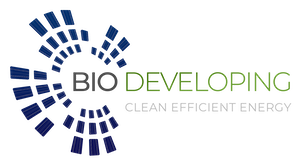




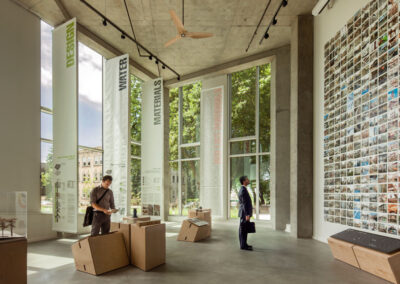
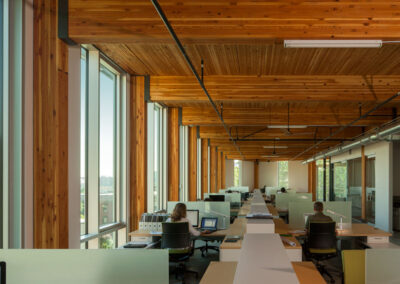
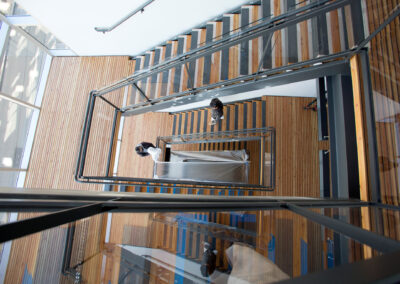
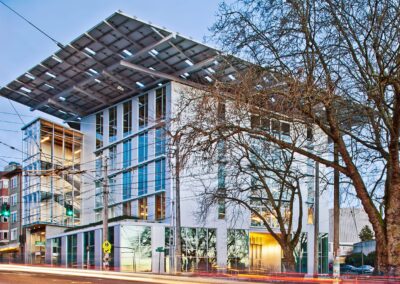


Recent Comments